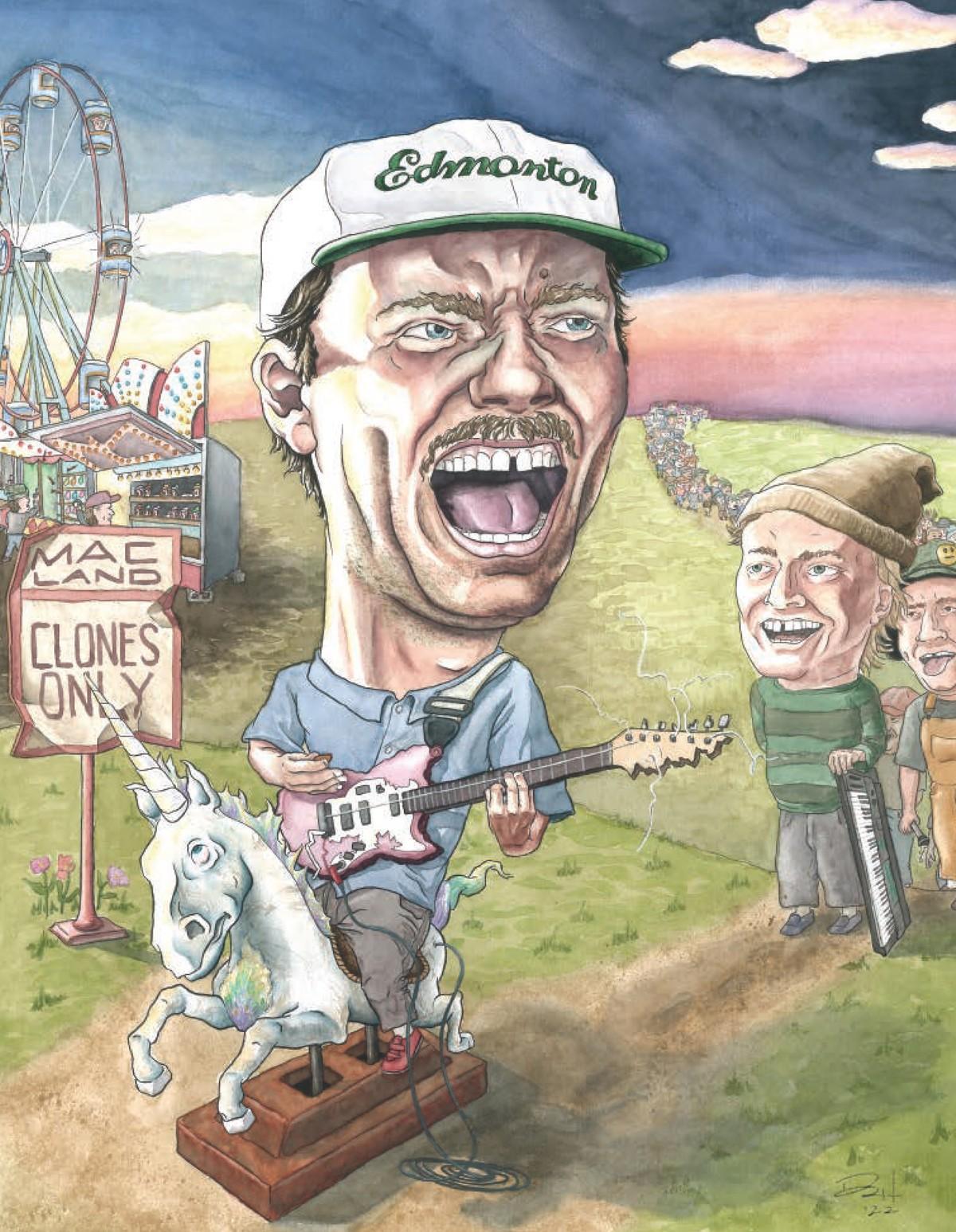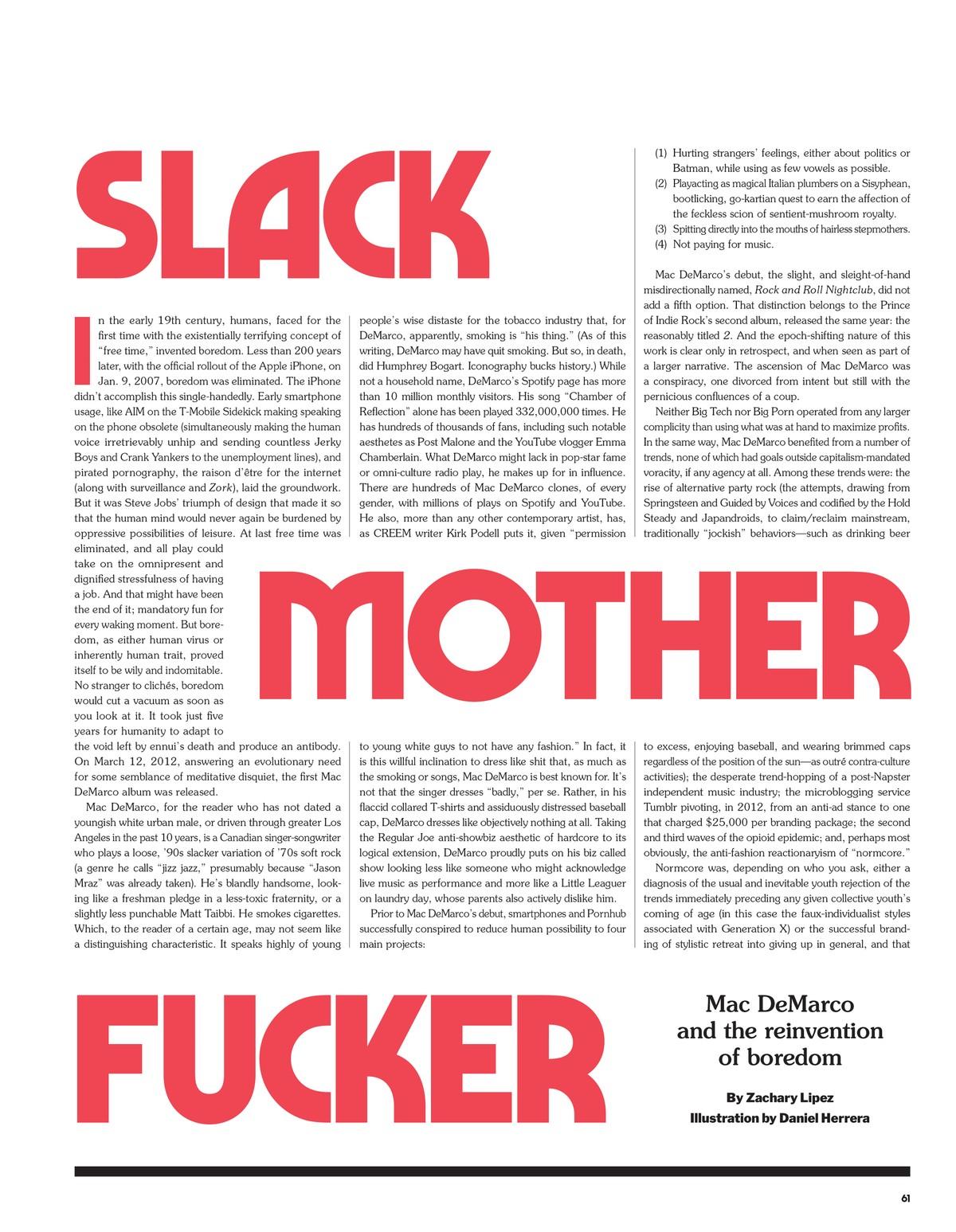SLACK MOTHER FUCKER
Mac DeMarco and the reinvention of boredom.


In the early 19th century, humans, faced for the first time with the existentially terrifying concept of “free time,” invented boredom. Less than 200 years later, with the official rollout of the Apple iPhone, on Jan. 9, 2007, boredom was eliminated. The iPhone didn't accomplish this single-handedly. Early smartphone usage, like AIM on the T-Mobile Sidekick making speaking on the phone obsolete (simultaneously making the human voice irretrievably unhip and sending countless Jerky Boys and Crank Yankers to the unemployment lines), and pirated pornography, the raison d’etre for the internet (along with surveillance and Zork), laid the groundwork. But it was Steve Jobs’ triumph of design that made it so that the human mind would never again be burdened by oppressive possibilities of leisure. At last free time was eliminated, and all play could take on the omnipresent and dignified stressfulness of having a job. And that might have been the end of it; mandatory fun for every waking moment. But boredom, as either human virus or inherently human trait, proved itself to be wily and indomitable.

